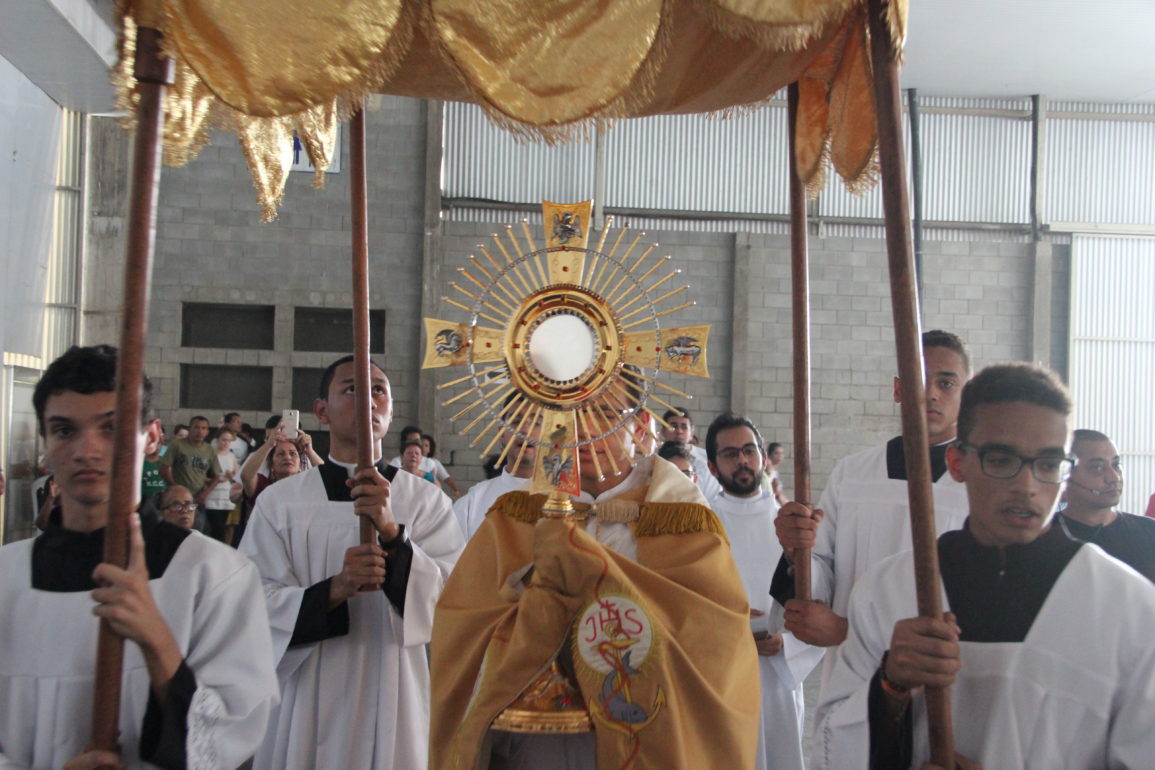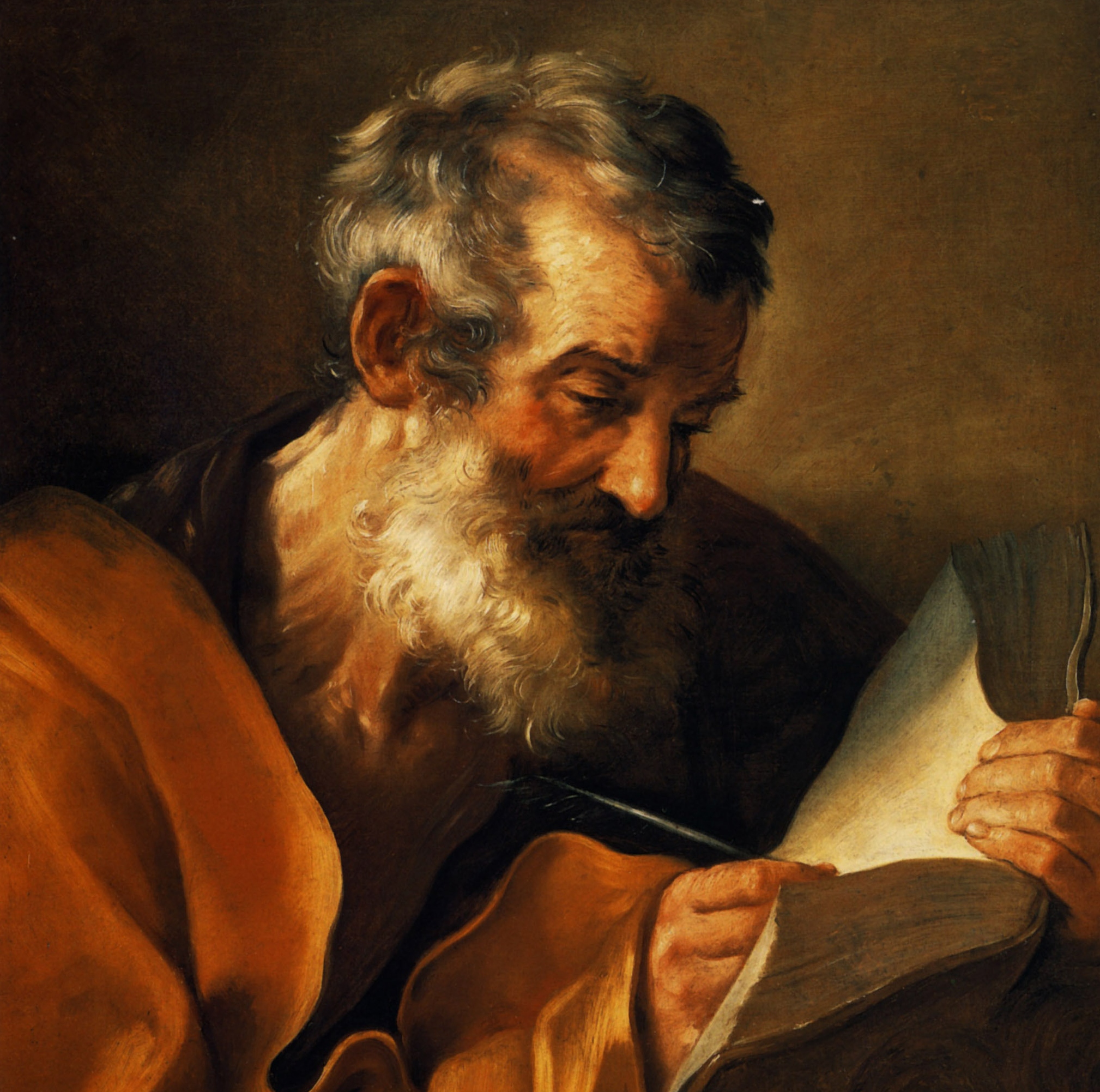Corpus Christi is the feast of the presence.
At the end of Eastertide, the Church has a set of celebrations, which express concretely the whole mystery of Christ. One of these celebrations is the Solemnity of the Most Holy Body and Blood of Our Lord.
It is one of the most deeply rooted feasts in the faithful People of God. Our attention focuses on the person of Jesus Christ who, out of love, willed to stay with us, to share our life, even after He Resurrected and Ascended into Heaven. He has willed to live in our midst, and He has done so sacramentally. The Jesus who was born in Bethlehem, who lived a hidden life in Nazareth, who walked the dusty streets of Jerusalem, who met the Samaritan woman and Zacchaeus, who cured the blind man from birth and the leper, who forgave the adulterous woman and chose to dine with publicans and sinners, who overcame His fear and sorrow on the night of His betrayal, that Jesus crucified, who rose on the third day, that Jesus is the same who is with us under the species of bread and wine.
His Body, Blood, Soul, and Divinity are hidden in the bread and wine. He lives and His Heartbeats with love for each one of us, for you concretely, in the Tabernacle. Therefore, the feast of Corpus Christi is the feast of a Love that never ends; it is the feast of Jesus’ presence.
From her birth, the Church has held this truth of faith, and has desired to stress this truth of faith with a Solemnity included in the celebrations of the Liturgical Year.
How, exactly, did this happen?
At the end of the 13th century, a Eucharistic Movement arose in Liège, Belgium, whose center was the Abbey of Cornillon, founded in 1124 by Bishop Albert of Liège. Among other customs, this Movement promoted exposition of the Most Blessed Sacrament and Benediction, the use of bells during the elevation at Mass, and the feast of Corpus Christi.
Saint Juliana of Mont Cornillon, at that time Prioress of the Abbey, was God’s chosen soul to propitiate this feast. She was born in Retines, near Liège, Belgium in 1193. She was orphaned at a young age and was educated by the Augustinian nuns in Mont Cornillon. Eventually, she made her religious profession. In time, she was elected Superior of her Community. Saint Juliana died on April 5, 1258, in the house of Cistercians nuns in Fosses.
From a young age, Saint Julian had great veneration for the Most Blessed Sacrament. She longed for the Church to have a special feast in Its honor. This wish grew after receiving a revelation where she saw in the Church, under the appearance of a full moon, a black stain, which signified the absence of this Solemnity.
Juliana shared the apparitions with Monsignor Robert de Thorete, then Bishop of Liège, and also with the learned Dominic Hugh, later Cardinal Legate of the Low Countries, and with Jacques Pantaleón, at the time Archdeacon of Liège, and later Pope Urban IV.
Bishop Robert de Thorete ordered the celebration of this feast for his diocese. The Pope requested a monk called John to write the office for this feast.
Eventually, a German Bishop learned about this custom and extended it to the whole of present-day Germany. The date chosen for the celebration was the Thursday after Sunday of the Most Holy Trinity.
At the same time, Pope Urban IV learned that in the year 1263 a Eucharistic miracle took place in Bolsena, Italy. A priest who was celebrating Mass doubted that the consecration was real. When the moment came to break the Sacred Form, blood issued from it, which soaked the corporal. This relic was taken in procession to Orvieto on June 19, 1264, where the Pope was staying with his court.
Edified and full of devotion in face of this miracle, the Holy Father, urged also by the petition of several Bishops, had the feast of Corpus Christi extended to the whole Church with the Bull “Transiturus” of September 8 of the same year, fixing it on the Thursday after the octave of Pentecost.
There is a tradition that states that Pope Urban IV requested Saint Bonaventure and Saint Thomas Aquinas to write an office for the Liturgy of the Hours. When the Pope began to read in a loud voice the office written by Saint Thomas, Saint Bonaventure tore his into smithereens.
In the course of the centuries, this feast has been increasingly consolidated in the life of the Church. Many are the Saints who have encouraged this celebration and have enkindled in the faithful’s hearts a fervent love of the Eucharist.
And, today, how can we prepare ourselves to celebrate this Solemnity full of faith? Simply by carrying out three acts:
Act of Faith: Awaken our faith in face of the living Christ present in the Tabernacle. Adore our hidden God under the Eucharistic species, venerating them with profound respect.
Act of Hope: Be aware that this food we receive as Communion is the food for the way to Eternal Life. Every Eucharist is a “pledge” of Heaven. Heaven joins the earth on the altar and we are now nourished with the “bread of Angels,” the bread that tastes of Eternal Life.
Act of Charity: Think of Jesus’ love for each one f us, for the whole of humanity, for me . . . and, contemplating His love, we must be moved to love Him more. We must love Him with all our being, with all our life, as He is waiting for us in the Tabernacle and only understands love.
So, let us live this feast full of faith, hope, and love, and know that Jesus always fulfils His promises, who says to us: “I will be with you always until the end of time.”
Translation by Virginia M. Forrester










